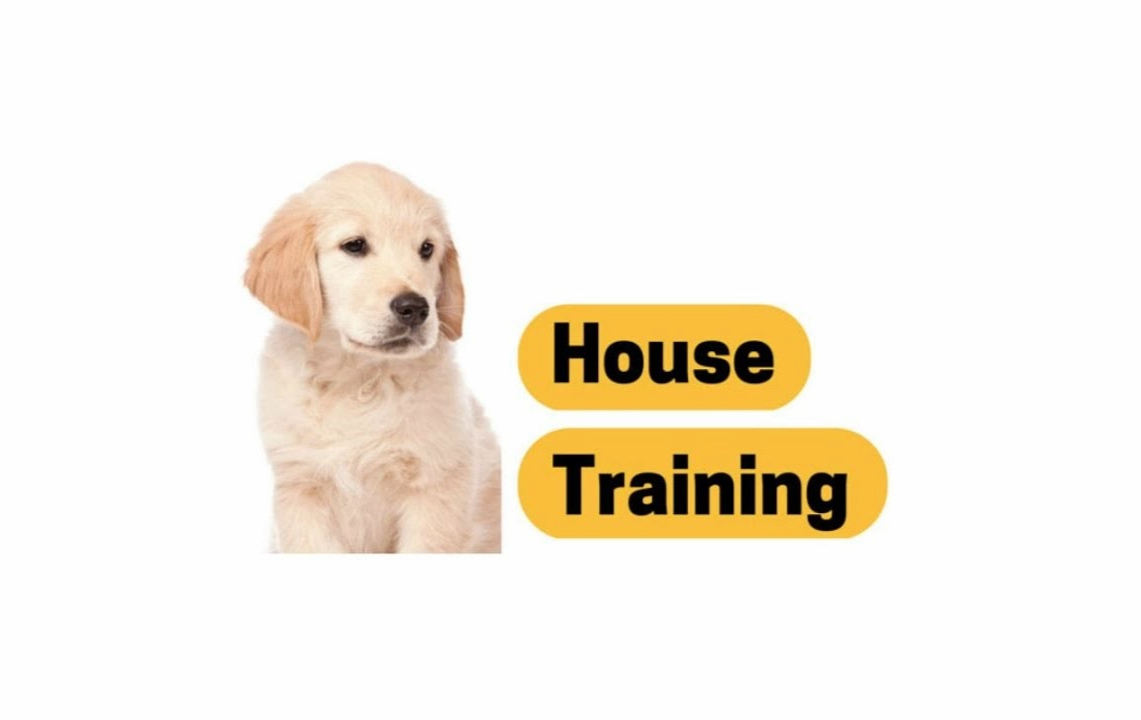The owner’s patience and time are the two things that are most important while training a dog or puppy. Dogs will have several issues during home training, so start with the most straightforward, most basic commands before moving on to more difficult ones so the dog can learn and progress as needed. the desired course for the owner. Because of this, it was decided that you had instructed them in the proper methodology.
What to Know Before Toilet Training Your Dog
Before they can be toilet trained, dogs need to learn a lot of things.
It will take your dog between 4 and 6 months to develop a habit of going to the bathroom on command. When your dog is a puppy, potty training is the most straightforward process.
Since this is a desirable habit for dogs to have while going outside, teaching them to use the restroom from a young age serves the dual function of developing their awareness of using the restroom wherever.
Because if you make a mistake while practicing, don’t become discouraged. They will learn as long as you maintain a training regimen that involves taking the puppies outdoors as soon as they show signs of having to relieve themselves and rewarding them.
What is The Best Age to Potty Train a Puppy?
Puppies are taught how to use the bathroom.
Starting early is key to potty training your dog successfully. Puppies can be trained from the age of 8 to 16 weeks.
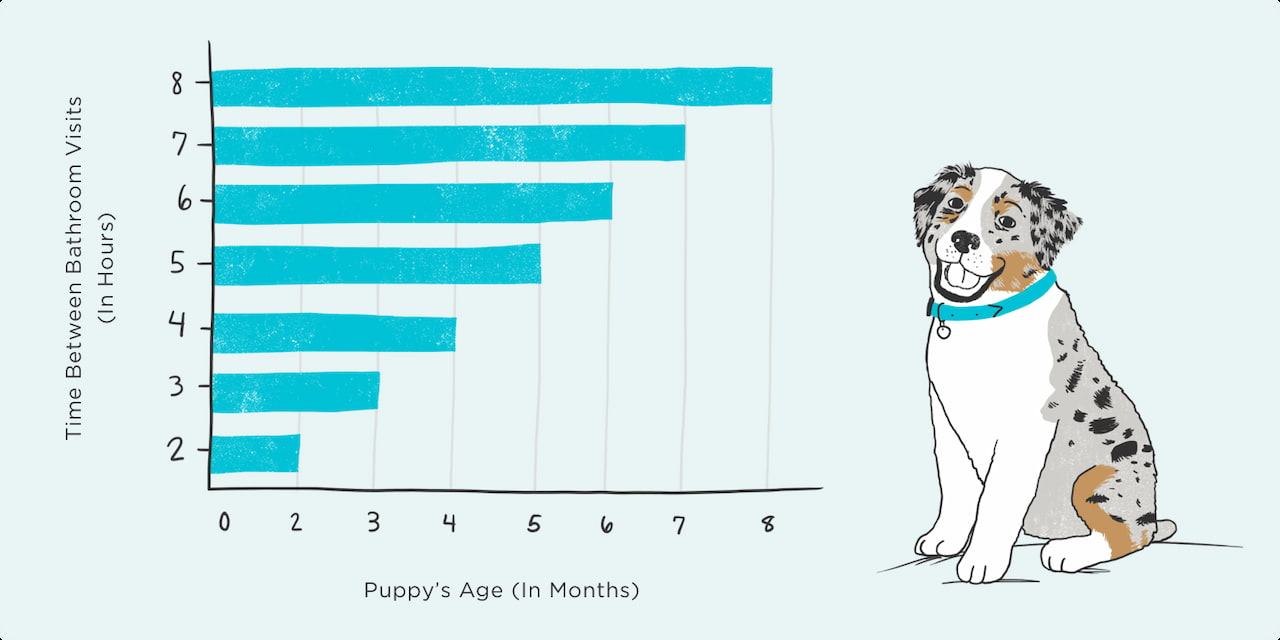
If you have the patience to train them now, they won’t subsequently develop negative habits like using the restroom inappropriately. Your dog will also sense how much you care for them.
How Long Does It Take to Potty Train a Puppy?
The majority of dogs may be housebroken in 4 to 6 months, but in other circumstances, it can take your dog up to a year.
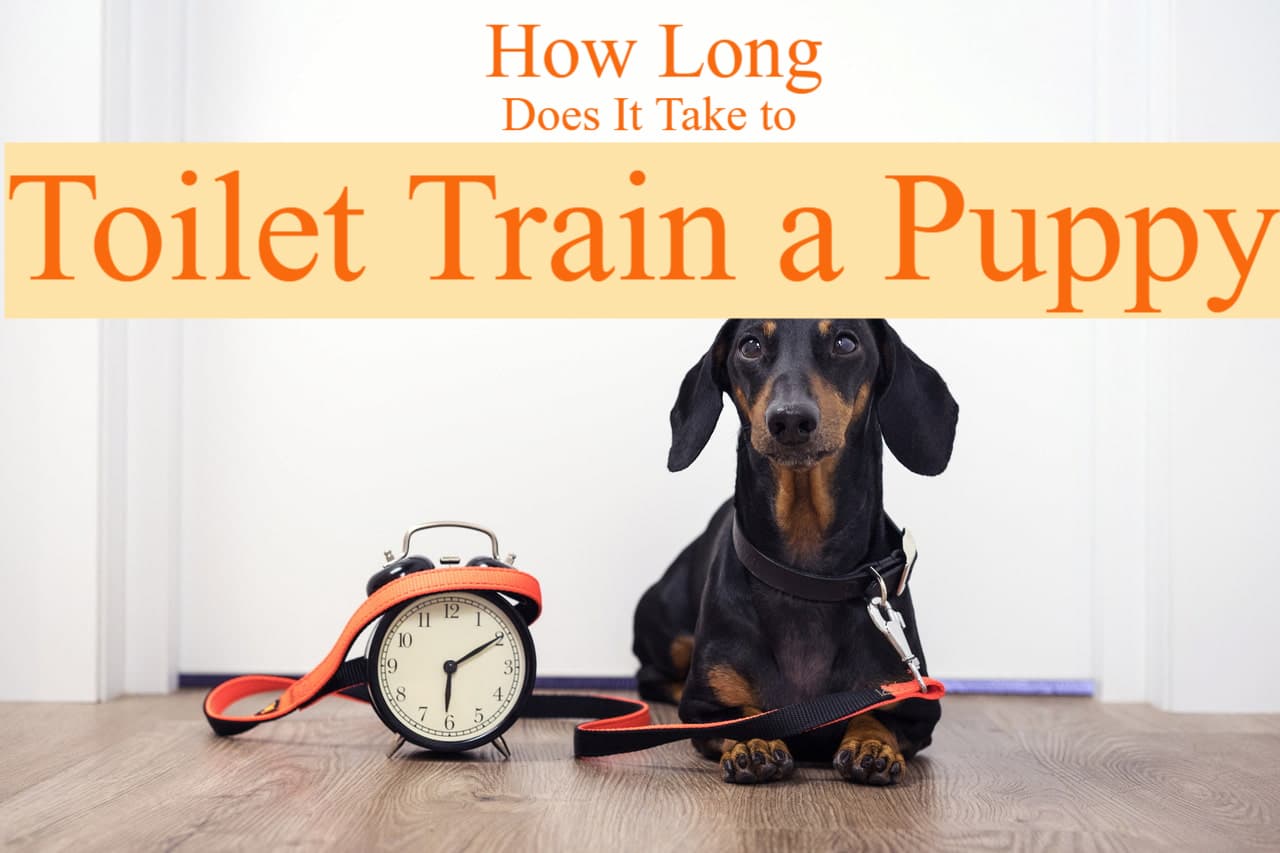
Additionally, a larger potty requires more frequent excursions outside and has a higher metabolism, which might affect how quickly or slowly a child learns to use it.
The environment in which your puppy lived before is another indicator. You may need to assist your puppy in breaking bad habits before they can form better ones.
Signs That Your Puppy Needs to Eliminate
Your dog is out of control if you notice behaviours like whimpering, sniffing, barking, wandering about, or scratching at the door. It should leave right away, so hurry up and do it.
Using a Crate to House Train Puppies
To teach your dog to go potty, use crates.
Each of us has a home or a tiny space that serves as our territory and, for dogs, as their sovereign state. Your dog will be easier to control and perceive things more clearly if you keep them in a crate.
This is a terrific idea to make it simpler to establish a daily routine for your dog when you give them a crate that’s simple to teach and keep track of.
Dogs Pads and Paper Training
Make using diapers and toilet paper a habit for your dog.
Some dog owners may believe that purchasing a pee pad will be the first step in toilet training, but they are mistaken because research shows that doing so makes teaching a dog to sit more challenging. Later, the dog goes to pee.
Additionally, wearing sanitary pads on your dog contributes to the development of negative habits like biting the pad, misusing the restroom, and producing unpleasant odors within the house. For the time being, a pad is the greatest option if your dog has mobility issues.
The best advice is still to walk them and toilet train them; both of these things will need a lot of time and patience, but they will improve your bond with your pet.
Observation and Supervision
To observe and supervise, you must pay close attention to your dog at all times, preventing opportunities for them to become dirty or make mischief. It is simple to teach dogs to your liking since you will be able to read their cues and understand what they need and want when you observe them.
When you tie a rope around the dog’s neck and mount it on a pole, you can watch for indicators that they need to go outside to relieve themselves or that they are hungry. Based on these signs, you may determine their living patterns and act quickly.
Control the Diet
Controlling the food of the dog is essential.
Puppies have a very weak digestive system, so you should give them the best, highest-quality food possible. You should also give them food numerous times a day to make sure it is loaded. entirely absorbed.
If their stools are otherwise too loose or they are unable to defecate, it is advisable to periodically check on them as well as their seats. Visit your veterinarian as soon as possible for treatment and guidance on altering your pet’s diet.
Praise
The dog should receive a reward for finishing the task as directed.
You should softly converse with your dog and show them lots of praise when they behave nicely rather than yelling at them when they mess up or damage stuff.
Your dog will be more interested and obedient to you if you admire them; they’ll try to behave well rather than misbehave to get a compliment or a reward for sausages or a favourite snack.
Create a Housetraining Schedule for Your Dog
Establish a regimen for your dog to follow.

Giving your dog plenty of time to exercise during training will help you train your dog successfully and produce the desired results.
The exact time to educate the dog more effectively and efficiently is when they are between the ages of six and nine months, which is between 10 and noon. A dog that is six months old can be trained effectively in six hours. Create a training timetable that works for each dog because each dog has a different training time and physique. To achieve this, study each dog’s anatomy.
When creating a schedule for the puppy, the activities and routines should be appropriate and reasonable, and you should take the puppy outside according to a straightforward schedule like:
- Earliest in the morning
- Late at night
- Following indoor play
- Following time spent in a barrel
- Upon awakening following a brief slumber
- Gnawing on bones or toys after
- After a meal
- Following a drink
The more you can create the schedule, the more you are attempting to explain to them the need of following a timetable and being consistent in your actions to have them accepted for potty and limited areas. behind my back, amid this chaos. Every day, this process continues, so you must be patient with your dog.
You should take your puppy to the bathroom area at these times in addition to the standard 30-minute pee break to establish a rhythm for your dog’s timing and schedule.
- After a meal
- Following a drink
- Following five to ten minutes of active play or another exercise
- As soon as you wake up from a snooze
In the course of training the dog, it’s crucial to establish a potty timetable. By establishing a regular daily schedule, you can assist your dog to become physically proficient at indoor training while also enhancing its sense of security and fostering human-dog trust.
The dog’s schedule needs to be complete and have the following components to have a clear and straightforward timetable:
- Eating period (at the same time every day)
- Broken toilet
- Crate or detention period
- Playing period
- Sleep time
However, the important thing to bear in mind is that the family members must all be aware of the timetables and schedules to follow the dog and teach the dog effortlessly and swiftly. the simplest.
To remember this, print up a detailed schedule, stick it or place it where others can see it, like the refrigerator, in front of the door, and then note what you notice. You and your dog have performed together. This will make it simpler for you to monitor your dog’s training, mistakes, and advancement in-between potty breaks.
If you’re going to bring your puppy home, it’s a good idea to clean them first and start teaching them by taking them out because dogs can’t regulate their bladders until approximately five months. During waking hours, you should let the puppy out around every 45 minutes so you can easily observe them as they attempt to correct their bad habits.
You can use the one-hour each month approach to calculate how long your puppy can hold it as you advance. So a dog that is three months old can hold it for three hours. Don’t expect them to reach that stage automatically; start slowly and build up to it.
Steps for Housetraining Your Puppy
It’s crucial to let your dog be unrestrained when you’re away from the house by allowing him to go around and lie in the house for effective training. When you have company or are otherwise occupied, only confine them to the firewood, a room, or a leash.
Follow these instructions when you begin training at home:
Step 1: Feed the dog as directed and divide the dog food.
Separate the food into portions for the dog according to the schedule.
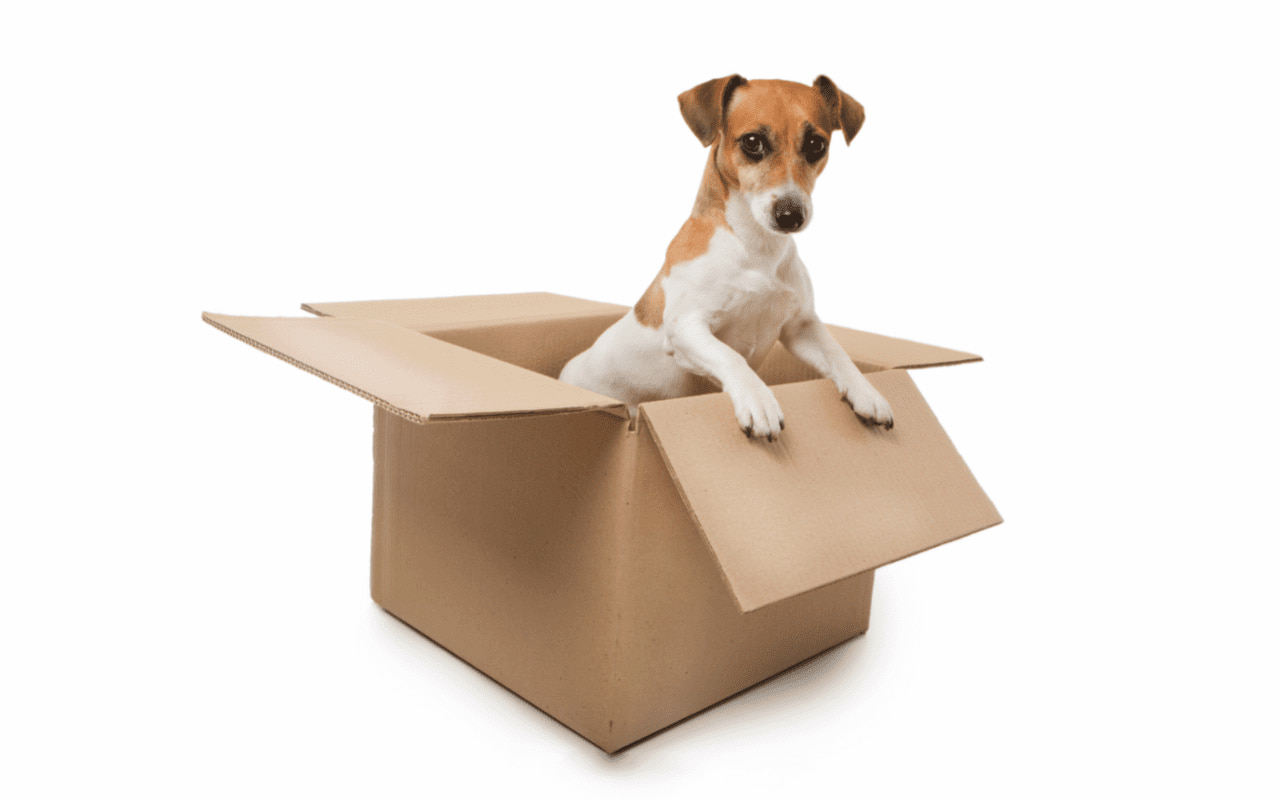
Step 2: Establish a habit.
Take your dog for a walk early in the morning while keeping them on a leash, and then take them out for potty breaks every 30 to 60 minutes while keeping them also on a leash. This is because keeping them on a leash keeps them from running around and being amused by all the interesting things nearby.
When your dog wakes up after a nap or after a meal, you should also take them outside. Make sure not to leave them unattended.
Step 3: Reward your dog.
Dogs are motivated by rewards.
If within five minutes they urinate or expel urine. The puppy will be able to finish toilet training with this. The puppy should not be interrupted while using the restroom inside the house. Give the puppy praise and a treat as soon as you are certain that the potty training is complete.
Step 4: Keep teaching your dog to go pee.
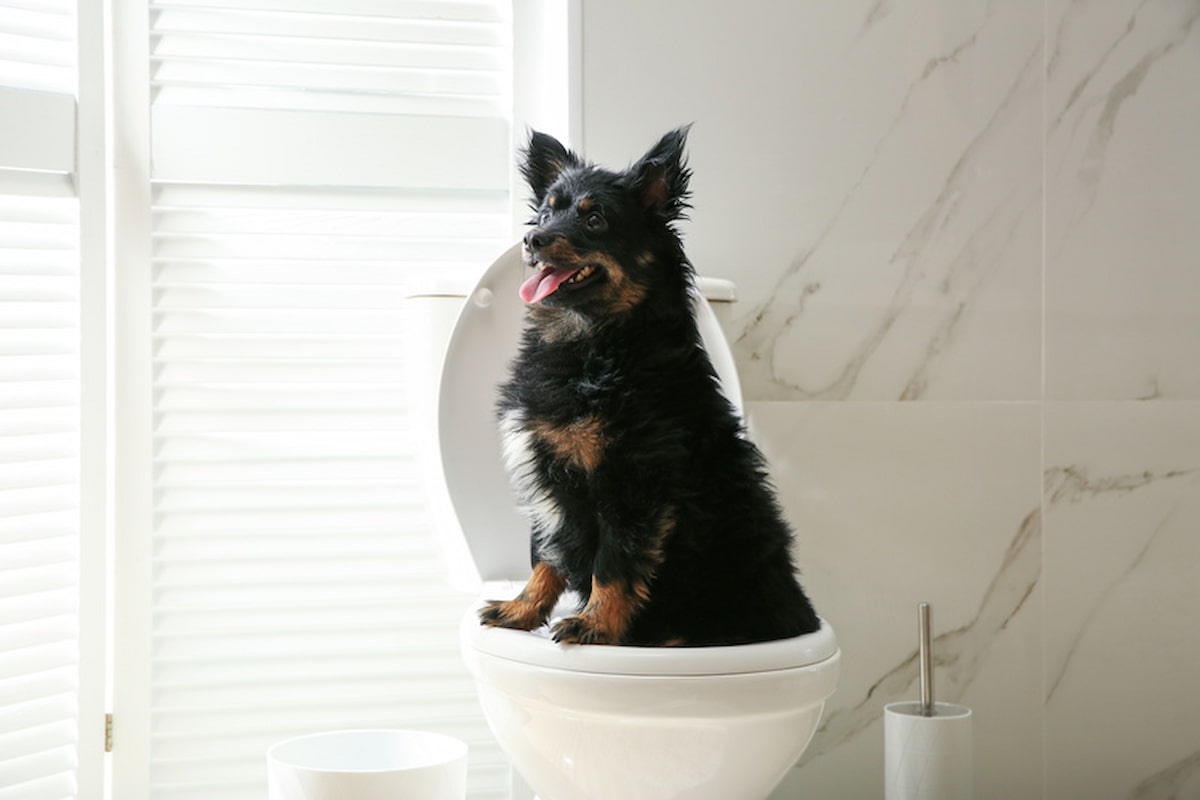
Since practically every dog will have an accident when sitting, this activity can help you try to stay to your schedule and avoid skipping trips, but you must establish a habit for them.
Step 5: Address and properly address accidents.
Accidents will happen, but staying on schedule and keeping an eye on your dog will help prevent them in the long run. If your dog accidentally urinates or defecates inside, clap your hands or firmly say “NO” (one expert we know substitutes the term “NOPE” because “NO” is difficult to shout).
Tips for Housetraining a Dog

We’ve discovered a few suggestions to help you expedite your child’s potty training process as effectively as possible:
- Before training, establish a clear rule for your dog and have a conversation with them.
- They should receive well-deserved awards, compliments, and hugs to show how much they are valued.
- Reduce the training time so that each session lasts only 10 to 15 minutes, but keep the daily practice time.
- Start by watching how they defecate and how they behave before using the restroom, and then gradually take charge of the process of using the restroom and sitting on the toilet.
Do’s and Don’ts in Potty Training Your Puppy
Punishing your dog for an error is not a good idea since it will make them fear you.
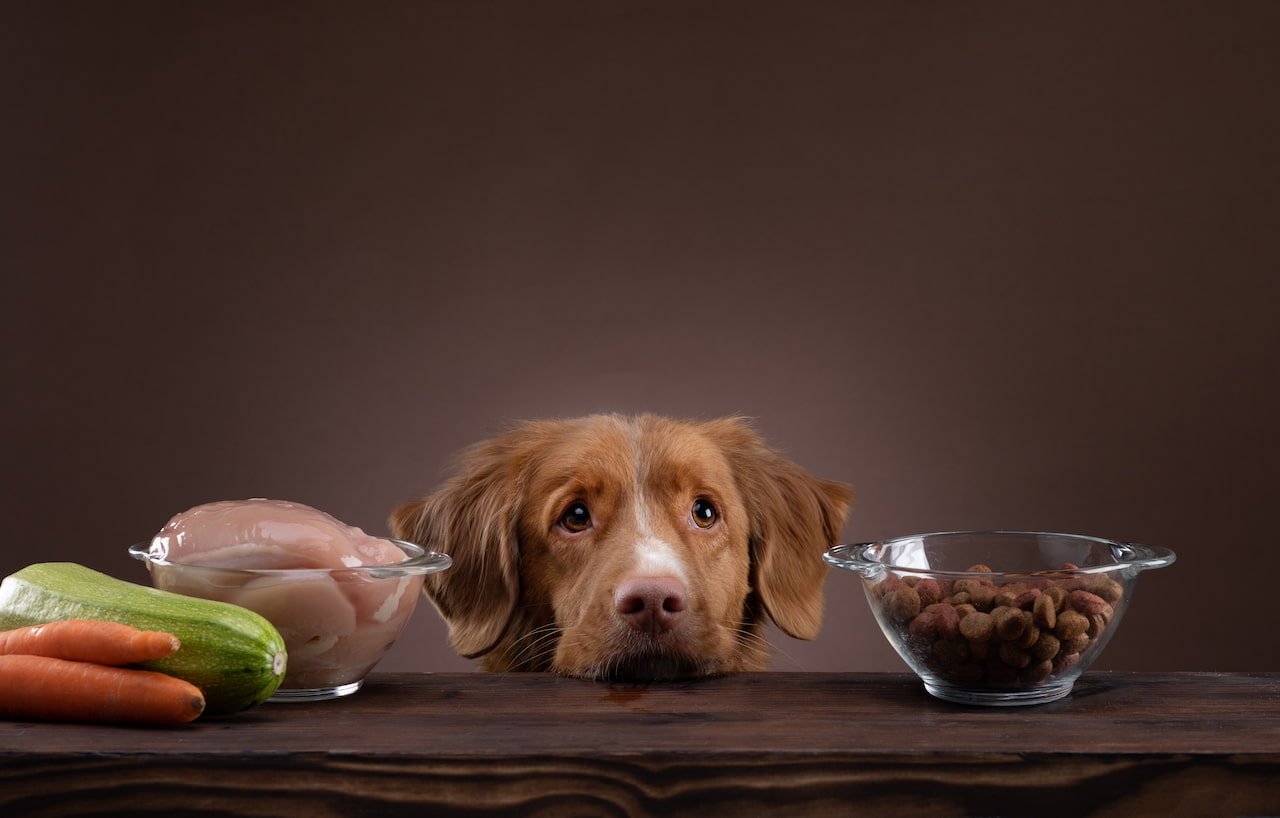
If you see your dog engaging in the behaviour, clap your hands vigorously to signal that it is inappropriate and then call the dog outside or gently pick it up. collar. Praise them or give them a tiny treat when they’re finished.
Puppies are unable to logically connect your anger to their mishap, so don’t react aggressively by yelling or rubbing your nose in it if you see the evidence but don’t see action.
With more time spent outside, accidents can be reduced, and puppies need more time to explore.
Instead of using an ammonia-based cleaning on the wound, use an enzymatic cleanser to reduce scents that could draw puppies back to the area.
Deal with Accidents the Right Way
Puppy accidents are common during training, but don’t worry about them. This is just a part of your puppy’s development. There are a few things you should keep in mind if you want to fix this problem:
- If the accident is not too serious, you should take the dog to the bathroom door and praise him and enjoy the food when he finishes the potty there.
- If your dog has dirt or saliva in its place, you should clean the area and rub its nose. Punishing your dog will only scare you or make them less likely to obey you. Don’t yell or punish your child in the process of training them.
- Your dog will be extremely driven to continue the issue of going pee and getting dirty in inappropriate places, and those places will smell like urine and feces. This well-trained cleaning area will leave your dog. dog.
- Most crucial, to reduce the number of terrible events that don’t occur, you should supervise operations and keep your dog inside firewood or their room. Regularly bringing your dog indoors when you’re not in the dog’s area will make it difficult for them to figure out where to go, which will delay the completion of their indoor potty training.
Make Plans for When You’re Away
If you are frequently gone from home, you must have a plan for your dog’s potty routine as well as other activities.
Your dog needs to be taken care of as a trained dog or as an adult right now. However, if your puppy is at home while you are gone for several hours or days, you should get ready for the following:
- Find a trustworthy somebody to look after your pet, especially when it comes to taking them to the potty.
- It may take a week or more to train your dog to stay in a particular area of the house, and the process must be done in preparation.
- Additionally, you should teach children to pick up newspapers that are dropped on the floor wherever, even in the living room, so that they feel like their home isn’t unkempt and littered.
- Put your dog in a space with adequate room for resting, and playing, and a separate spot to remove the papers if you intend to educate them to understand with the help of pieces of paper. Only use their urine containers or pet hygiene pads, such as multiple layers of newspaper, in the paper removal area so that your pet can use the restroom on their initiative.
- The second scenario is when you have to clean up messes that occur outside of the authorized removal area for the dog. The most crucial step at this point is to cover the area with a soiled rag or paper towel so that the dog can identify the foul spot as the one that has to be cleaned.
The suggestion for pet owners is to not wait until the dog is too old to train because teaching a puppy to sit on the potty from a young age is highly challenging and requires a lot of time and patience from the trainer. In the long run, that method won’t be as successful and will take more time than teaching a puppy. You might think about using this method to instill a toilet habit in your dog at an early age. Both you and your pet will gain from them.

